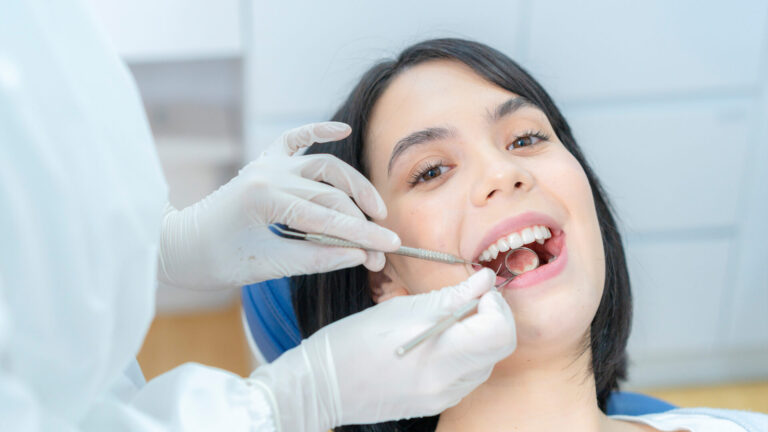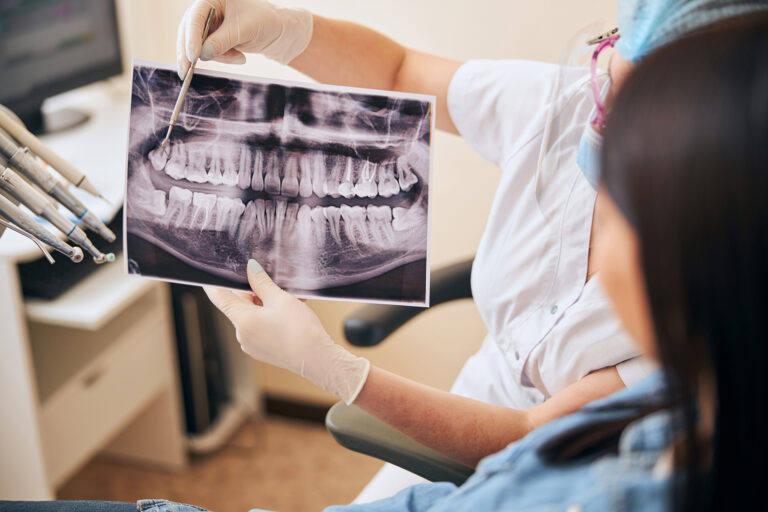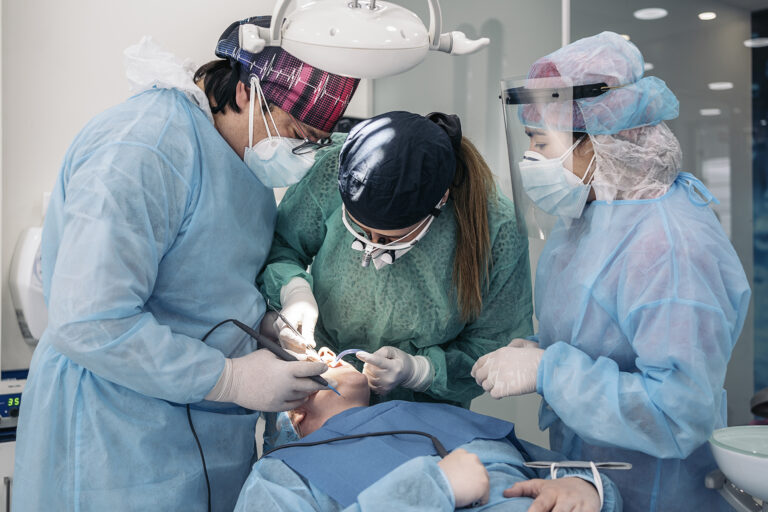If you have a sharp, throbbing pain at the back of your mouth, it might be more than just your wisdom teeth acting up. It might be pericoronitis, an infection and inflammation of the soft tissue around a tooth, most commonly around a partially erupted wisdom tooth. This is a serious dental issue that needs to be treated as soon as possible to prevent complications and to protect your oral health.
Pericoronitis and Wisdom Teeth
Pericoronitis is closely linked to the eruption of the third and final set of molars, known as wisdom teeth. These teeth usually emerge in the late teens or early twenties, and their arrival is often accompanied by challenges that can cause inflammation of the gum tissue.
The symptoms of pericoronitis typically develop around wisdom teeth, especially when the tooth is partially erupted and covered by a flap of gum tissue called the operculum. The presence of this gum flap creates a pocket where food particles and bacteria can get trapped, setting the stage for infection and swelling. The gum tissue around the wisdom tooth can become red, tender, and inflamed, making it uncomfortable to chew or even to open your mouth fully.
Pericoronitis can be mild or severe. Acute pericoronitis is a sudden, short-term infection that can be effectively treated with antibiotics and pain relief, whereas chronic pericoronitis is a persistent condition that may require ongoing care and monitoring. If left untreated, pericoronitis can lead to abscesses or cysts, which can be painful and severe.

Pericoronitis Symptoms
Pericoronitis symptoms can range from mild discomfort to severe, debilitating pain that interferes with daily activities. Local symptoms typically begin around the affected wisdom tooth and may include intense, throbbing pain that worsens when biting down or chewing. The gums around the tooth become swollen, red and tender to the touch, often accompanied by a bad taste in the mouth and bad breath.
Many patients report difficulty chewing on the affected side, and the inflammation makes it hard to fully open the mouth. Pus may drain from the area around the tooth, creating an unpleasant taste and odour that persists despite brushing and mouthwash.
Pericoronitis can actually harm your whole system. Fever, swollen neck lymph nodes, and general fatigue may develop as your body fights the infection. Some patients experience referred pain that radiates to the ear, throat, or jaw, making it hard to pinpoint the exact source. It’s critical to get professional treatment for pericoronitis to prevent long-term complications.

What Causes Pericoronitis?
The primary cause of pericoronitis is the unique anatomy of partially erupted wisdom teeth. A flap of gum tissue (the operculum) often covers part of the emerging tooth crown. This tissue creates a pocket where food particles, bacteria and debris can easily get trapped, forming a breeding ground for harmful bacteria.
Poor oral hygiene contributes to the development of pericoronitis, as wisdom teeth are difficult to clean thoroughly. Traditional brushing and flossing techniques can’t reach these areas effectively, allowing plaque and bacteria to accumulate.
Several lifestyle and medical factors increase the risk of pericoronitis. Smokers are more prone to gum infections as smoking compromises the immune function and reduces blood flow to the gum tissues. Additionally, high stress levels can weaken the immune system, reducing the body’s ability to fight off bacterial infections in the mouth.
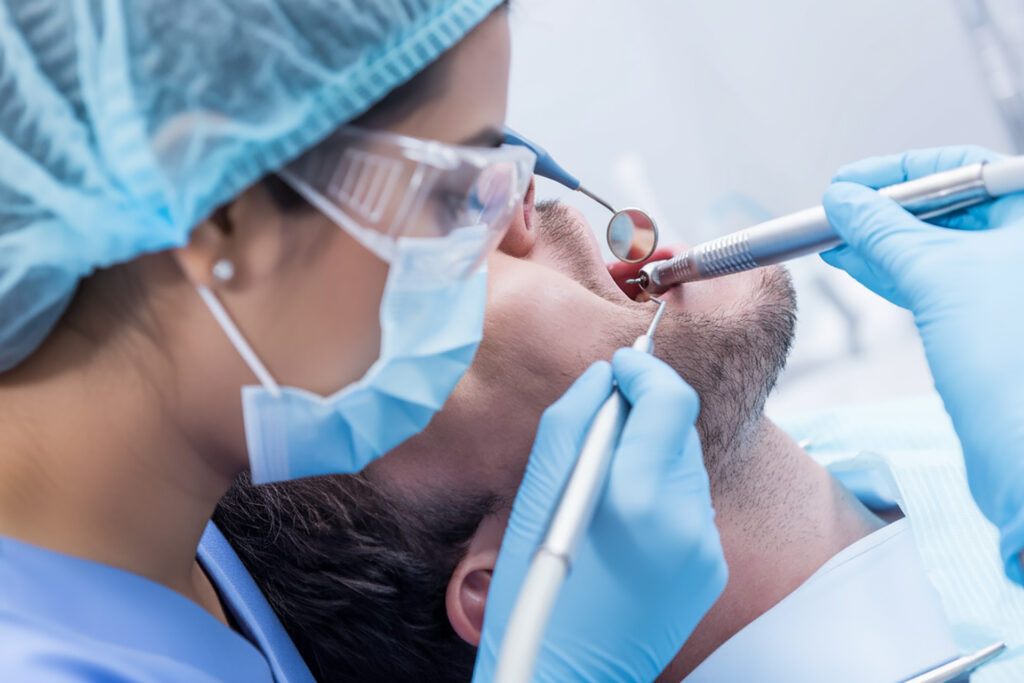
How Dentists Diagnose Pericoronitis
Diagnosis of pericoronitis begins with a clinical examination, during which your dentist visually examines the affected area for signs of inflammation, swelling and infection. The examination also includes checking for pus discharge, measuring the depth of gum pockets around the tooth, and assessing the degree of pericoronitis pain and tenderness.
Dental imaging plays a significant role in comprehensive diagnosis. X-rays or panoramic scans reveal the position of the wisdom tooth, the extent of its eruption, and whether the tooth is impacted or has sufficient space to erupt properly. These images help dentists determine the best treatment approach, such as extraction.
The severity assessment determines whether the infection is localised to the gum tissue around the tooth or has spread to surrounding tissues, which would require more aggressive treatment and, in severe cases, hospitalisation.
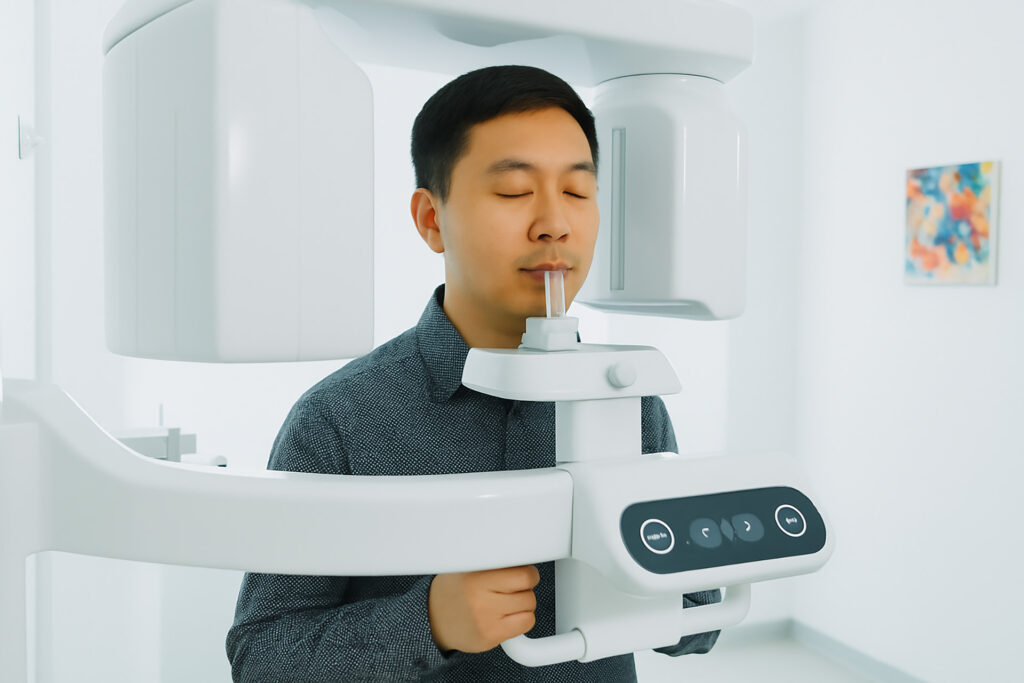
Pericoronitis Treatment Options
Treatment for pericoronitis depends on its severity, extent, and duration. For mild cases, immediate relief can be achieved through gentle, warm saltwater rinses several times a day, which help reduce bacteria and soothe inflamed tissues. Antiseptic mouthwashes containing chlorhexidine can also provide antibacterial benefits. However, it is important to use it properly to avoid tissue irritation.
Over-the-counter pain medications, such as ibuprofen, can help manage pericoronitis pain and reduce inflammation; however, they only provide temporary relief and don’t address the underlying issue of gum inflammation. When an infection is present, antibiotics are necessary to eliminate harmful bacteria and prevent their spread.
Professional dental cleaning under the gum flap can remove trapped food debris and bacteria that home care can’t reach. This irrigation procedure, performed under local anaesthesia, provides significant relief and helps resolve the infection faster.
For recurrent or severe cases, surgical intervention may be recommended. Operculectomy involves removing the gum flap covering the tooth, eliminating the pocket where bacteria accumulate. In cases where the wisdom tooth can’t erupt properly or continues to cause problems, extraction of the tooth may be the most effective long-term solution.
Those wondering how to cure pericoronitis should understand that while home remedies can provide temporary relief, professional dental treatment is usually necessary for a complete resolution and the prevention of recurrence.

How to Prevent Pericoronitis
Prevention strategies focus on maintaining good oral hygiene, particularly around the emergence of wisdom teeth. Using a soft-bristle toothbrush and angling it towards the gum line helps clean hard-to-reach areas. Interdental brushes or water flossers can clean around partially erupted teeth where traditional floss can’t reach.
Regular professional dental cleanings are also more important if wisdom teeth are erupting, as dentists have specialised tools to clean areas that are inaccessible during home care.
For individuals with problematic wisdom teeth positioning, preventive extraction before symptoms develop can eliminate the risk of pericoronitis. This proactive approach is more beneficial for patients with limited jaw space or wisdom teeth that show signs of impaction. Your dentist will be able to guide you on the best course of action.
Lifestyle modifications also play a role in prevention. Eating a balanced diet low in sugary and sticky foods reduces bacterial growth, while avoiding tobacco products supports immune function and gum health.

Complications of Untreated Pericoronitis
Ignoring pericoronitis can lead to serious complications that go beyond a toothache. The infection can spread to the surrounding tissues, causing cellulitis that may affect the face, neck and throat. In severe cases, this can compromise breathing and swallowing, leading to a medical emergency that requires immediate hospitalisation. Systemic health risks are rare but can include the spread of infection through the bloodstream, especially for individuals with heart conditions or compromised immune systems.
Abscess formation is another risk that may require surgical drainage and extended antibiotic treatment. Chronic inflammation associated with untreated pericoronitis can also contribute to more widespread gum disease that can affect other teeth and lead to tooth loss.
Pericoronitis can go on indefinitely without treatment, and symptoms can recur and worsen over time. Importantly, chronic inflammation can cause permanent damage to gum tissues and supporting bone structures.
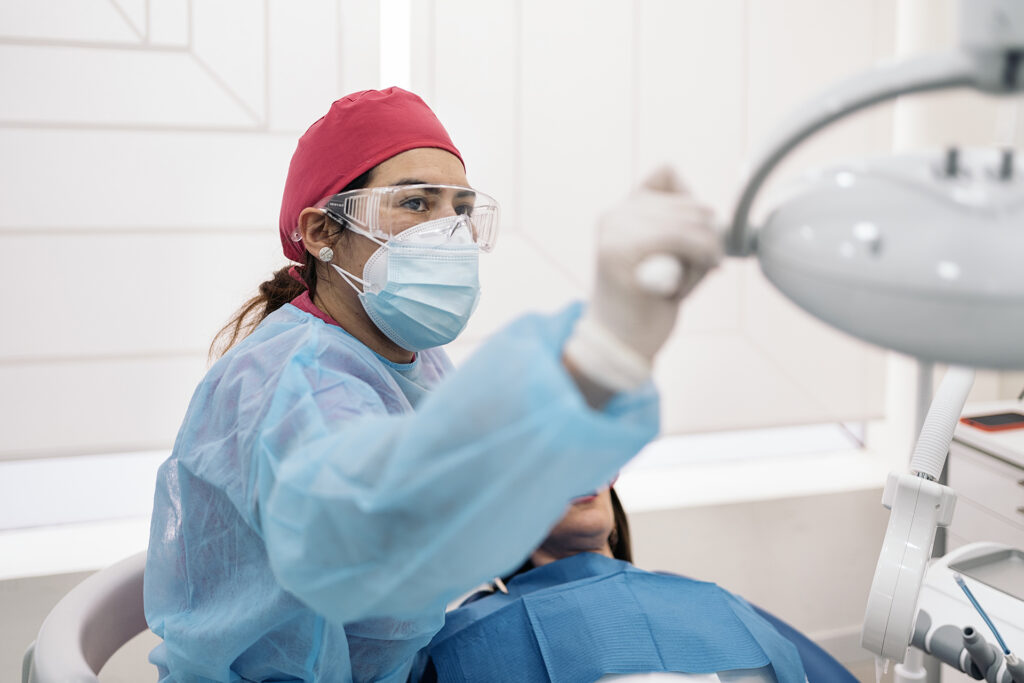
Special Considerations for Vulnerable Populations
Pregnant women require careful management of pericoronitis as hormonal changes can intensify gum inflammation and sensitivity. Treatment options take into account the safety of medications or extractions and often favour conservative approaches when possible.
Patients with diabetes, HIV, or those undergoing cancer treatment are at higher risk due to compromised immune function. These individuals require more aggressive treatment and closer monitoring to prevent complications, and treatment plans should be coordinated between dental professionals and other medical providers.

When to See a Dentist for Pericoronitis
Certain symptoms require immediate attention regardless of how long you think you have had pericoronitis. A fever with facial swelling indicates the infection is spreading and can be life-threatening. Difficulty swallowing or breathing, severe pain that doesn’t respond to medication, and rapidly spreading swelling are all emergencies that require immediate care.
If you have pericoronitis, experience swelling or tenderness in your gums, or find that you have difficulty chewing, visit a dental professional. Their diagnosis and treatment can help prevent your pericoronitis from worsening. With treatment, pericoronitis typically improves within a few days to two weeks. However, if your symptoms worsen or do not improve within 48 hours, consult a dentist immediately.
The key to managing pericoronitis is early recognition and professional treatment. TEETH @ Tiong Bahru’s experienced dentists have expertise in wisdom tooth care and pericoronitis treatment, as well as the most advanced treatment options. Book an appointment with us today to protect your oral health.




